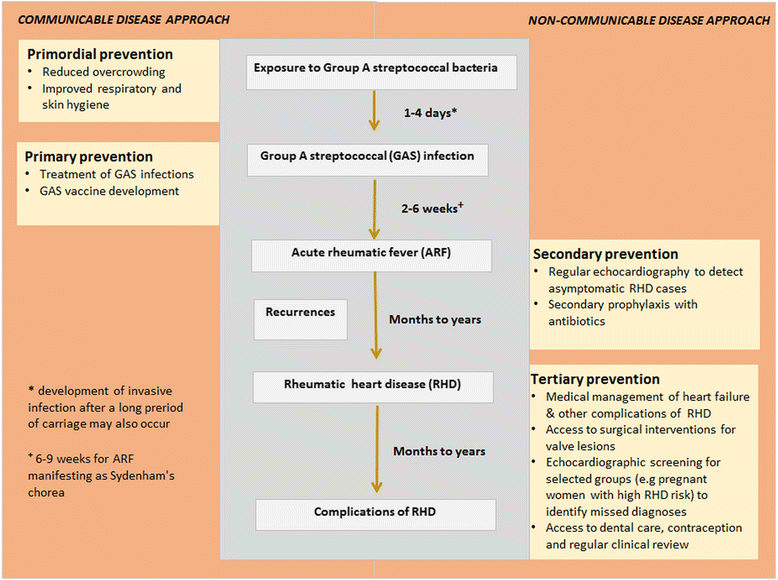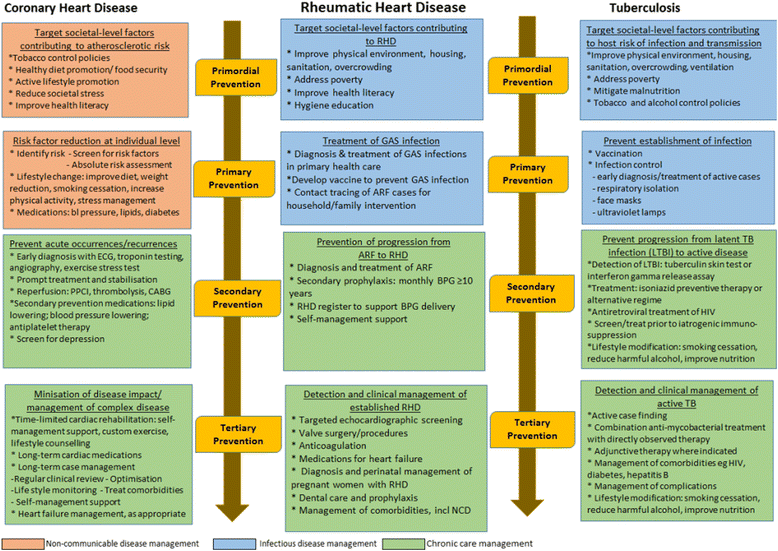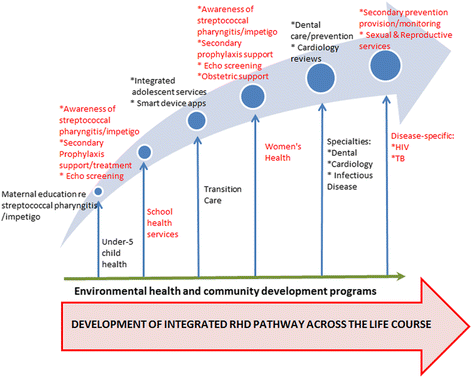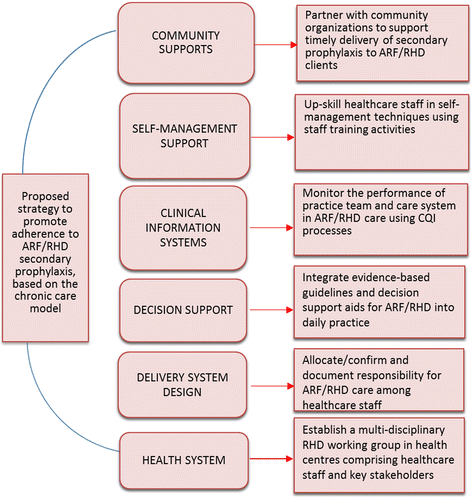Rheumatic heart disease: infectious disease origin, chronic care approach
- PMID: 29187184
- PMCID: PMC5708129
- DOI: 10.1186/s12913-017-2747-5
Rheumatic heart disease: infectious disease origin, chronic care approach
Abstract
Background: Rheumatic heart disease (RHD) is a chronic cardiac condition with an infectious aetiology, causing high disease burden in low-income settings. Affected individuals are young and associated morbidity is high. However, RHD is relatively neglected due to the populations involved and its lower incidence relative to other heart diseases.
Methods and results: In this narrative review, we describe how RHD care can be informed by and integrated with models of care developed for priority non-communicable diseases (coronary heart disease), and high-burden communicable diseases (tuberculosis). Examining the four-level prevention model (primordial through tertiary prevention) suggests primordial and primary prevention of RHD can leverage off existing tuberculosis control efforts, given shared risk factors. Successes in coronary heart disease control provide inspiration for similarly bold initiatives for RHD. Further, we illustrate how the Chronic Care Model (CCM), developed for use in non-communicable diseases, offers a relevant framework to approach RHD care. Systems strengthening through greater integration of services can improve RHD programs.
Conclusion: Strengthening of systems through integration/linkages with other well-performing and resourced services in conjunction with policies to adopt the CCM framework for the secondary and tertiary prevention of RHD in settings with limited resources, has the potential to significantly reduce the burden of RHD globally. More research is required to provide evidence-based recommendations for policy and service design.
Keywords: Acute rheumatic fever; Chronic care; Prevention; Rheumatic heart disease.
Conflict of interest statement
Ethics approval and consent to participate
Not applicable.
Consent for publication
Not applicable.
Competing interests
The authors declare that they have no competing interests.
Publisher’s Note
Springer Nature remains neutral with regard to jurisdictional claims in published maps and institutional affiliations.
Figures




References
-
- Murray CJ, Vos T, Lozano R, Naghavi M, Flaxman AD, Michaud C, et al. Disability-adjusted life years (DALYs) for 291 diseases and injuries in 21 regions, 1990-2010: a systematic analysis for the global burden of disease study 2010. Lancet. 2012;380:2197–2223. doi: 10.1016/S0140-6736(12)61689-4. - DOI - PubMed
-
- Zuhlke L, Engel ME, Karthikeyan G, Rangarajan S, Mackie P, Cupido B, et al. Characteristics, complications, and gaps in evidence-based interventions in rheumatic heart disease: the global rheumatic heart disease registry (the REMEDY study). Europ Heart J. 2014; doi:10.1093/eurheartj/ehu449. - PMC - PubMed
Publication types
MeSH terms
Grants and funding
LinkOut - more resources
Full Text Sources
Other Literature Sources

